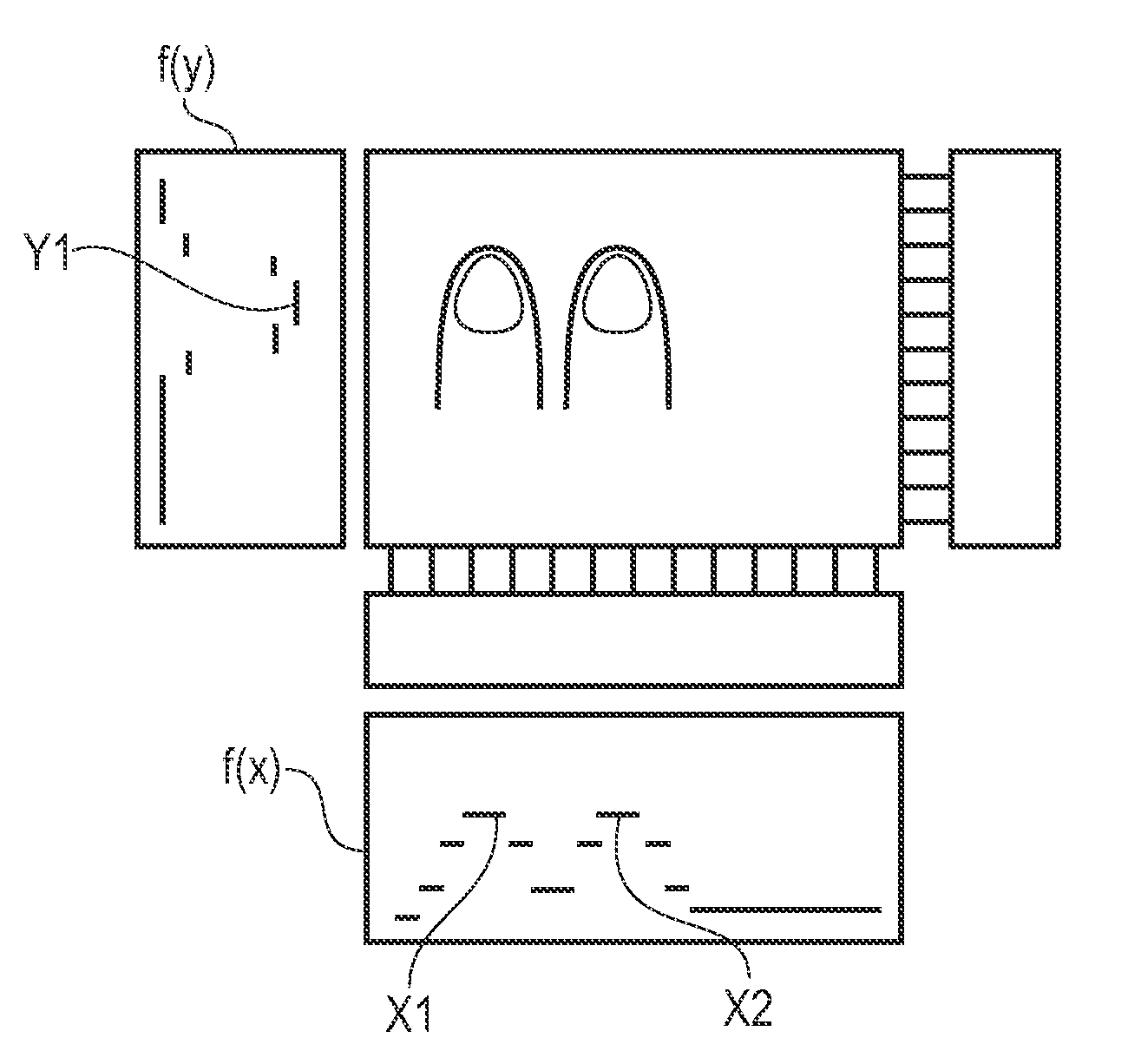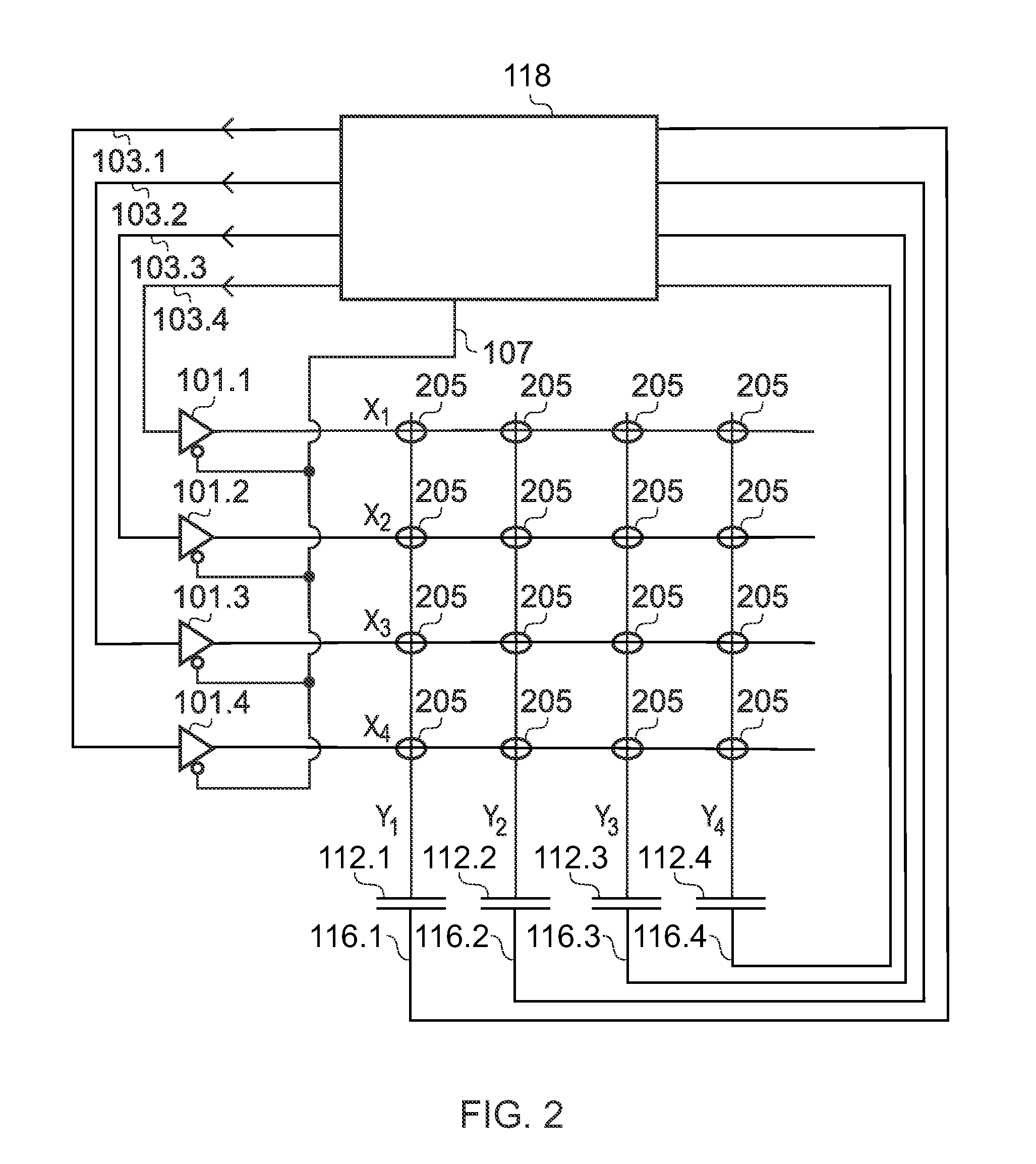Touch Position Finding Method and Apparatus
a technology of position finding and touch, applied in computing, instruments, electric digital data processing, etc., can solve the problems of several milliseconds to compute the touch position of a frame, unacceptably slow, and relatively computationally expensiv
- Summary
- Abstract
- Description
- Claims
- Application Information
AI Technical Summary
Benefits of technology
Problems solved by technology
Method used
Image
Examples
Embodiment Construction
[0044]The methods of the invention are applied to sets of data output from a touch screen. A 2D touch screen will be used in the following detailed description. It is however noted that the methods are applicable to 1D touch sensors and also in principle to 3D sensor technology, although the latter are not well developed. The 2D touch screen is assumed to be made of a square grid of sensing nodes characterized by the same internode spacing in both orthogonal axes, which will be referred to as x and y in the following. It will however be understood that other node arrangements are possible, for example a rectangular grid could be used. Further, other regular grid patterns or arbitrary node distributions could be provided, which may be more or less practical depending on which type of touch screen is being considered, i.e. capacitive, resistive, acoustic etc. For example, a triangular grid could be provided.
[0045]When sampled, the touch screen is assumed to output a set of data compri...
PUM
 Login to View More
Login to View More Abstract
Description
Claims
Application Information
 Login to View More
Login to View More - R&D
- Intellectual Property
- Life Sciences
- Materials
- Tech Scout
- Unparalleled Data Quality
- Higher Quality Content
- 60% Fewer Hallucinations
Browse by: Latest US Patents, China's latest patents, Technical Efficacy Thesaurus, Application Domain, Technology Topic, Popular Technical Reports.
© 2025 PatSnap. All rights reserved.Legal|Privacy policy|Modern Slavery Act Transparency Statement|Sitemap|About US| Contact US: help@patsnap.com



